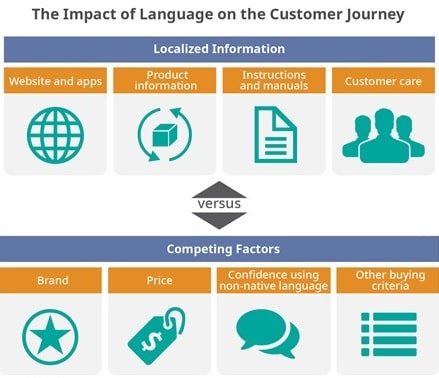How Can Multilingual Contact Centres Alleviate Staffing and Operational Challenges? Justin Custer, CEO of ChatLingual
Hint: It starts with removing language barriers
It is no secret that the COVID-19 pandemic put contact centres through the wringer. Overnight, governments around the world implemented mandates that required people and companies to change how we work, moving from in-office to fully remote settings. As society adapted to the new requirements and changes in sentiment, companies were required to quickly solve new staffing and operational challenges within an already complex contact centre space.
Contact centres have long since had a notoriously high attrition rate, with the Harvard Business Review citing turnover as high as 45 percent—twice the average turnover in other departments. Moreover, a 2022 NICE WEM Global Survey report research shows that this number grows to 50 percent when companies have more than 5,000 support agents.
The pandemic, coupled with the Great Resignation and Brexit, led to an even greater increase in customer service agent turnover, resulting in higher wait times and decreased customer satisfaction.
In order to thwart increasing attrition, contact centre leaders have had to rethink their staffing strategies, particularly around hybrid and remote work.
Traditionally, Business Process Outsourcing companies have established multiple in-person multilingual hubs to support their customers. While this model may have been barely manageable in the past, it is not an ideal option in a post-pandemic world.
Job satisfaction is critical for keeping employee productivity high and mitigating turnover—a key area of focus for CX leaders.

Another benefit: remote workers are proven to be more productive with one study conducted by Stanford showing a 13 percent increase in productivity. Happy days!
Developing effective retention strategies and investing in modern technology is key as the cost of hiring continues to rise. For contact centres supporting customers in different countries and languages, that cost is even higher when searching for candidates with bilingual skill sets.
Along with macroeconomic conditions, as companies become even more attuned to the importance of providing native-language services to their customers, the demand (and cost) for bilingual workers is growing at a considerable rate. As stated in one RMS Recruitment article, the effects of Brexit have led to a continual decline of available bilingual workers in the UK.
Providing customer support in English only is not cutting it for many businesses in the UK. According to a study by the BBC and Indeed, 23 percent of executives believe native-language support for German and Mandarin Chinese will be important to their business in the next five years, and 20 percent say French and Spanish will be. The results of this study highlight the importance of business growth in relation to native-language services.

A study from the European Commission shows that one-third of employers have difficulties filling positions due to applicants lacking foreign language competencies.
Businesses understand that supporting customers in their native language is important and customers want it; so, the big question is: how can companies harness the growth potential of providing native-language services with increasing cost and complexities of hiring bilingual speakers?
Forward-thinking companies have ditched the bilingual job requirement in favour of multilingual technology. By investing in multilingual contact centre solutions, a single agent is able to support any customer in every language. Computer-generated interpretations provide companies a competitive edge while making it easier to scale into new markets and to the right people. With technology bridging the language gap, companies are able to reduce operational costs and broaden their candidate pool by hiring for the right technical and communication skills rather than language.
Companies will need a comprehensive multilingual cloud contact centre solution to upscale passable CX into great CX. By investing in multilingual technology, contact centres are able to increase team retention by maintaining a flexible work environment, reducing hiring costs, and overcoming staffing and operational challenges, all the while retaining happy customers. Stay one step ahead of the competition by providing the key CX element of the future: real-time language interpretation.

ChatLingual – Multilingual Support Made Simple
ChatLingual’s enterprise-grade software creates best-in-class global customer support. Their team delivers the world’s most comprehensible multilingual contact centre solution, supporting customer interactions in 100 languages in real time across chat, email, SMS, and messaging channels. Implementing their cloud-hosted Agent Success Platform allows companies to easily converse with customers in their native language with no bilingual hires or translators required. The ChatLingual solution is cost-effective, quick-to-scale, and integrates into existing technology stack, allowing companies to focus on growing their business and delighting customers in their preferred language.
For additional information on ChatLingual visit their Website





